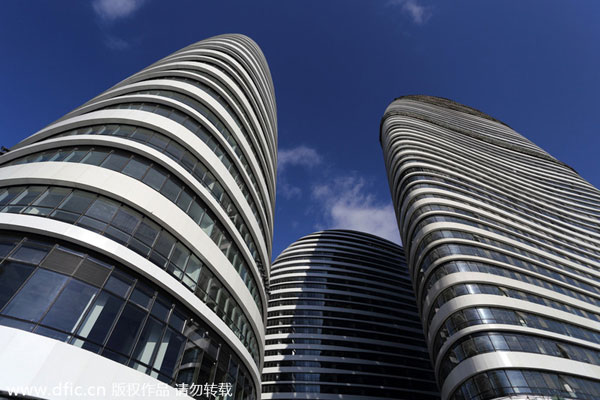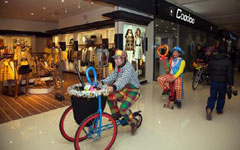 |
|
View of the Wangjing SOHO developed by SOHO China in Beijing, China, Feb 8, 2014. [Photo/dfic.cn] |
According to Knipfing, to succeed in a competitive market such as China, a new shopping center needs a good city-center location - or a well-connected suburban location - without overwhelming existing competition.
Experience is the next most important issue. According to Annie Lei, national director of China consulting at Cushman & Wakefield, experienced developers are far more likely to pick the right sites and use an experienced retail architect to design something that is attractive to both retailers and shoppers.
Meanwhile, online shopping continues to grow and evolve with more creative avenues of operation, promotion and payment.
|
 |
|
 |
Another interesting trend is the growing significance of the shopping mall food court. Although some sectors of retail expansion are slowing, the food and beverage sector is booming, said the report.
Shanghai is a good example of this. Historically, the proportion of a shopping center's F& B was in the 15 to 20 percent range, but some Shanghai-area malls are seeing the ratio run as high as 40 percent, with some putting F& B shops on every floor, according to Knipfing.
This is also the case in Beijing. While rents in prime retail areas are expected to maintain stable growth of 5 to 10 percent in 2014, there is growing demand from the secondary luxury, jewelry, lifestyle and boutique F& B sectors.
Meanwhile, in emerging locations and projects, F&B operators, especially major fast-food chains, cafes and large-scale local restaurants, are proving to be essential to raising occupancy and driving much-needed foot traffic.
The report also noted that the Chinese are becoming more confident in expressing their likes and dislikes, as well as developing an individual sense of style.
While just five years ago, the typical luxury-goods shoppers stuck with major brands that had recognizable logos, the Chinese are now behaving more like other international buyers as they begin shopping for something more subtle.
Given the potential for an oversupply of retail property, and the likelihood of high-profile retail project failures in the near future, the government may begin to rethink its town-planning strategies, experts believe.
